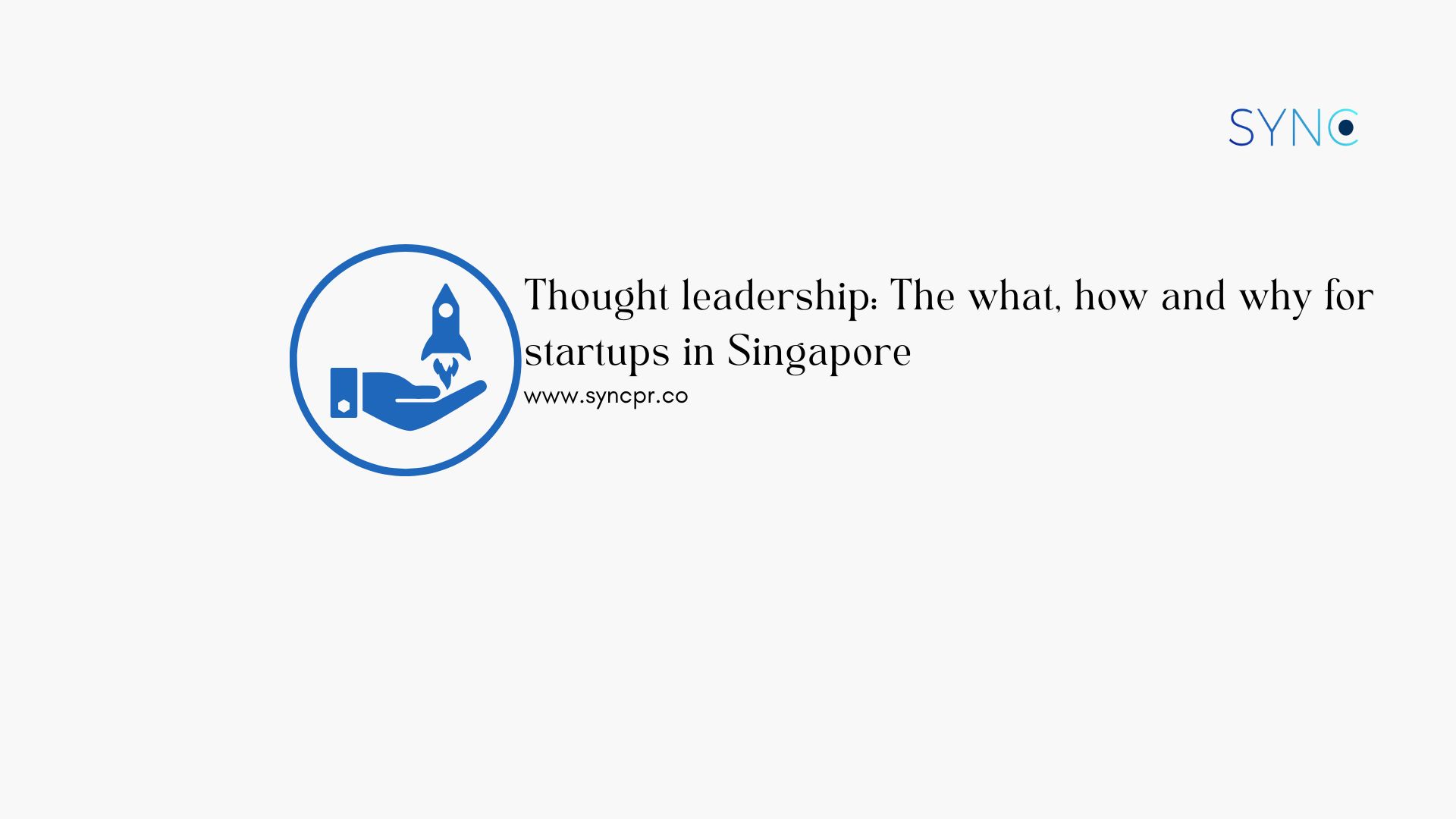When starting a business, many entrepreneurs have consistently understood that thought leadership is a powerful tool to gain a competitive edge. The Edelman-LinkedIn research study on thought leadership has proven that. 88% of decision-makers shared how thought leadership content influenced their trust in a business in 2017, and that figure slightly increased to 89% in 2020. However, while many understand its importance, few possess the know-how and best practices to execute an effective thought leadership strategy.
Understanding thought leadership
Thought leadership is the ability to share insightful and innovative ideas that go beyond conventional thinking. Successful thought leaders possess a unique blend of deep industry insights, credibility, and the capacity to educate their audience. They are visionaries who drive forward-thinking initiatives that resonate with their target market. Thought leadership embodies more than just industry expertise — it embraces critical thinking and the ability to provoke meaningful change.
For startups, it’s about carving the business and its spokespersons as trusted authorities, acting as a beacon of knowledge amidst a sea of competitors. Contrary to popular belief, thought leadership does not necessarily need to be solely done by the founder or CEO. Other C-suite leaders and senior executives can share their perspectives so long as it is relevant to the business and value adds to the overall public relations efforts.
In this guide, we’ll delve into why thought leadership is essential for startups, and how entrepreneurs can develop a thought leadership strategy to propel their business further.
Why thought leadership matters?
Startups as new players in the market often face a credibility gap which can be overcome by establishing themselves as thought leaders. By providing valuable insights and solutions to industry challenges, startups demonstrate their expertise and knowledge in their field. This helps promote their brand and distinguish themselves from their competitors. This can lead to increased brand visibility, as the name becomes more well-known within the industry.
On top of this, establishing brand awareness through thoughtful conversation not only helps establish their credibility, but also creates a foundation of trust that can lead to long-term relationships with customers, investors, and other stakeholders. Over time, this can help startups achieve sustainable growth and build a thriving business.

Thought leadership can also attract top talent to the startup, as potential employees are drawn to companies with a reputation for innovation and forward-thinking. Additionally, it can help the startup forge strategic partnerships and collaborations with other industry leaders, which can lead to new opportunities for growth and innovation.
Developing an effective thought leadership strategy
Define your niche and audience
An effective thought leadership strategy deeply understands the topics relevant to their business, and the audience(s) that would benefit the most from it. Startups must delve into industry research and identify any gaps or underserved segments they can tap into and share their knowledge on. Honing in on a niche allows startups to tailor their messaging and content to address the unique pain points and specific needs of their audience.
Choose the right content formats and channels
After identifying the niche and audience, the next crucial step is to determine the most effective content formats and channels for reaching and engaging with them. This requires a nuanced understanding of audience preferences, behaviours, and consumption habits. While LinkedIn is usually the go-to platform for professional and industry-specific content, this would still depend on the target audience’s main channel consumption for the type of content the startup aims to share. Are they avid readers who prefer long-form articles, or do they prefer bite-sized content like infographics or video snippets? The content strategy should best match audience preferences, because this in turn can maximise the startup’s visibility, engagement, and impact.
Establish a consistent content cadence
Consistency is the backbone of any successful thought leadership strategy. For thought leadership to work best in the overall content strategy, startups must develop a content calendar and commit to a regular publishing schedule to keep their audience engaged and informed. Whether it’s weekly blog posts, monthly webinars, or quarterly research reports, a regular schedule demonstrates reliability and helps startups stay top-of-mind with their audience, driving engagement and loyalty over time.
Engage with your audience
Thought leadership isn’t a one-way street — it’s a dynamic conversation between the thought leader and the audience. It is a good practice for startups to engage with their audience to help foster meaningful dialogue, build relationships, and broaden horizons (be it the thought leader’s or the audience’s). This means actively soliciting thoughts, questions, and comments. Posting Q&A or polls online, participating in industry discussions on social media, and responding promptly to audience inquiries are some effective ways to demonstrate a commitment to adding value. An authentic engagement with the audience, strengthens the startup’s thought leadership position, cultivating a loyal and activate community of followers to the growing business.
Tips and tricks for startup thought leaders
As a startup founder or executive, there are several best practices to keep in mind as you embark on your thought leadership journey. We’ve gone ahead and listed some tips and best practices you can adopt in growing yourself as a thought leader below:
- Authenticity is key: Stay true to yourself and your startup’s values. Share personal stories and experiences to connect with your audience on a deeper level.
- Stay aligned with mission and values: Ensure your thought leadership efforts reflect your startup’s overarching goals and principles. Consistency in messaging reinforces credibility and builds trust with your audience.
- Take a stand on relevant issues: Don’t shy away from controversial topics or industry debates. Use your expertise to contribute meaningfully to discussions and drive positive change.
- Active networking and collaboration: Engage with other industry experts, influencers, and stakeholders. Collaborate on projects or co-author content to expand your reach and increase visibility.
How can PR help to build brand trust and loyalty?
In conclusion, thought leadership serves as a credible- and trust-building strategy for startups to cut through the competitive noise and leave an indelible mark on their industry. It is a powerful public relations tool to build brand trust and loyalty while shaping stakeholders’ perceptions. In the long run, a consistent, value-adding thought leader establishes themselves as a trusted source of expertise, and in extension the startup will be associated with the positive reputation of trust.
If you want to understand how you can develop an effective thought leadership strategy, or learn more about how PR can add value to your brand, drop us an email at hello(a)syncpr.co.

